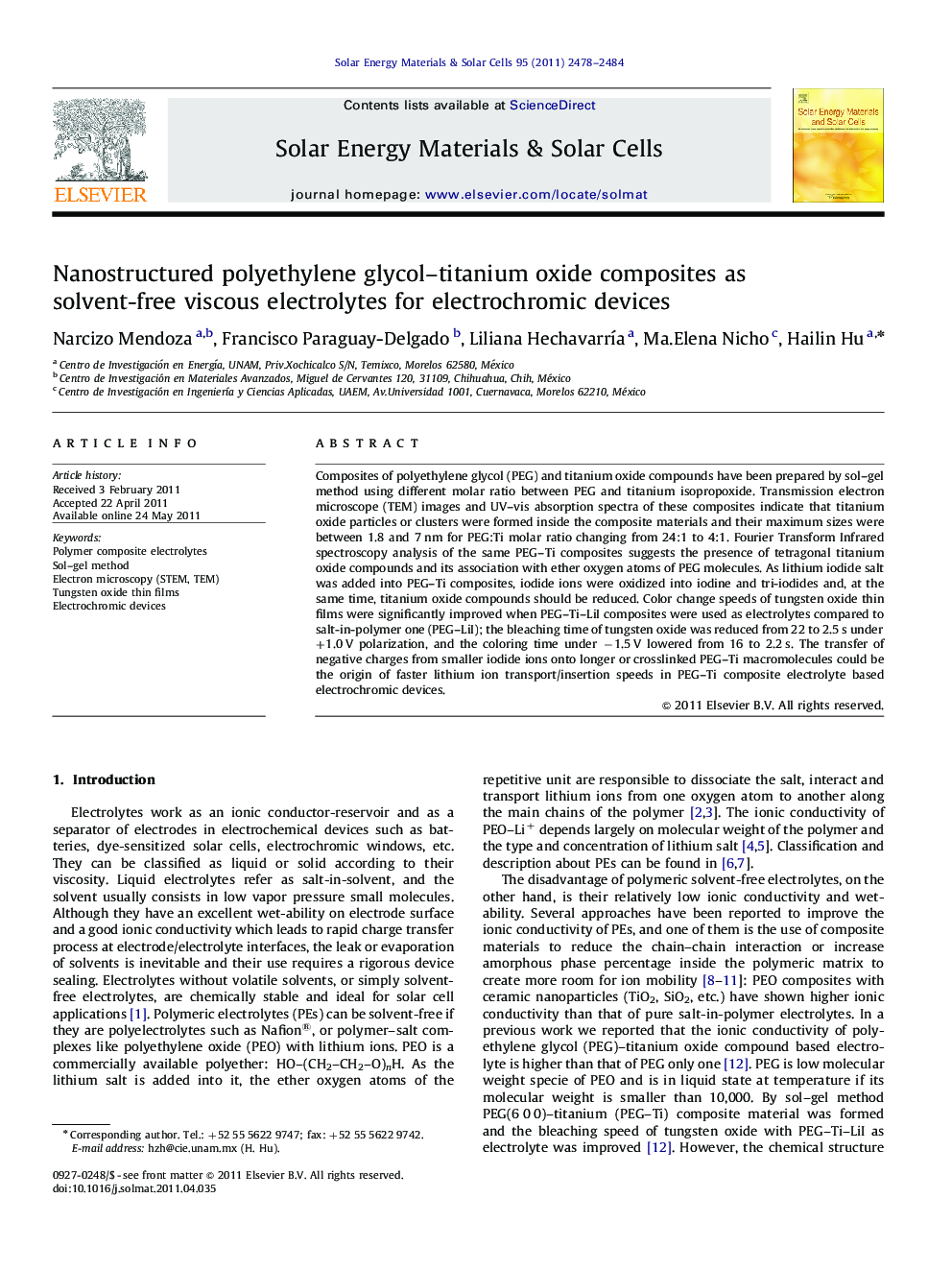| کد مقاله | کد نشریه | سال انتشار | مقاله انگلیسی | نسخه تمام متن |
|---|---|---|---|---|
| 78809 | 49342 | 2011 | 7 صفحه PDF | دانلود رایگان |

Composites of polyethylene glycol (PEG) and titanium oxide compounds have been prepared by sol–gel method using different molar ratio between PEG and titanium isopropoxide. Transmission electron microscope (TEM) images and UV–vis absorption spectra of these composites indicate that titanium oxide particles or clusters were formed inside the composite materials and their maximum sizes were between 1.8 and 7 nm for PEG:Ti molar ratio changing from 24:1 to 4:1. Fourier Transform Infrared spectroscopy analysis of the same PEG–Ti composites suggests the presence of tetragonal titanium oxide compounds and its association with ether oxygen atoms of PEG molecules. As lithium iodide salt was added into PEG–Ti composites, iodide ions were oxidized into iodine and tri-iodides and, at the same time, titanium oxide compounds should be reduced. Color change speeds of tungsten oxide thin films were significantly improved when PEG–Ti–LiI composites were used as electrolytes compared to salt-in-polymer one (PEG–LiI); the bleaching time of tungsten oxide was reduced from 22 to 2.5 s under +1.0 V polarization, and the coloring time under −1.5 V lowered from 16 to 2.2 s. The transfer of negative charges from smaller iodide ions onto longer or crosslinked PEG–Ti macromolecules could be the origin of faster lithium ion transport/insertion speeds in PEG–Ti composite electrolyte based electrochromic devices.
Figure optionsDownload as PowerPoint slideHighlights
► Polyethylene glycol–titanium complexes (PEG–Ti) were prepared by sol–gel method.
► Nanoparticles of titanium oxide were formed inside the PEG–Ti complexes.
► Titanium oxide compounds in the composite electrolytes were reduced by iodide ions.
► The large negative ions in polymeric electrolytes enhance lithium ion mobility.
► A faster electrochromic response in tungsten oxide thin films has been observed.
Journal: Solar Energy Materials and Solar Cells - Volume 95, Issue 8, August 2011, Pages 2478–2484